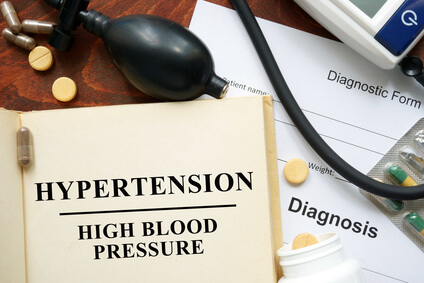Having too low diastolic pressure could be linked to an increase in cardiovascular events (J-shape phenomenon). However, current guidelines suggest a target blood pressure under 130/80 mmHg with no lower limit for diastolic pressure.

This paper, recently published in JAMA, sought to evaluate the J-shape phenomenon of diastolic pressure in treated patients who reached a target systolic pressure under 130 mmHg—as guidelines recommend.
The cohort of patients was divided into the following intervals of diastolic pressure: less than 60 mmHg, between 60 and 70 mmHg, between 70 and 80 mmHg, and more than 80 mmHg.
The study’s primary endpoint was a composite of all-cause mortality, myocardial infarction, and stroke. The secondary endpoint included death due to cardiovascular causes, infarction, and non-fatal stroke.
The analysis included 7515 patients with a mean age of 65.6 years.
The lower risk for events was observed in patients with a diastolic pressure between 70 and 80 mmHg.
Read also: What to Do with Blood Pressure Levels Between 130/80 and 139/89 mmHg.
A mean diastolic pressure under 60 mmHg was linked to a significant increase in the primary endpoint risk (hazard ratio [HR]: 1.46; 95% confidence interval [CI]: 1.13-1.90; p = 0.004).
In relation to the composite, it was even more significant: death for cardiovascular causes (HR: 1.74; 95% CI: 1.26-2.41; p = 0.001), non-fatal stroke (HR: 1.73; 95% CI: 1.15-2.59; p = 0.008), and non-fatal stroke (HR 2.67; 95% CI: 1.26-5.63; p = 0.01).
Conclusion
This cohort study showed that a too low diastolic pressure (under 60 mmHg) was associated with an increase in cardiovascular events in treated patients who had reached a target systolic pressure of 130 mmHg or less.
The finding of an ideal systolic pressure between 70 and 80 mmH should be studied further.
li_2021_oi_201127_1612905985-33781Original Title: Evaluation of Optimal Diastolic Blood Pressure Range Among Adults With Treated Systolic Blood Pressure Less Than 130 mm Hg.
Reference: Jingen Li et al. JAMA Network Open. 2021;4(2):e2037554. doi:10.1001/jamanetworkopen.2020.37554.
Subscribe to our weekly newsletter
Get the latest scientific articles on interventional cardiology





